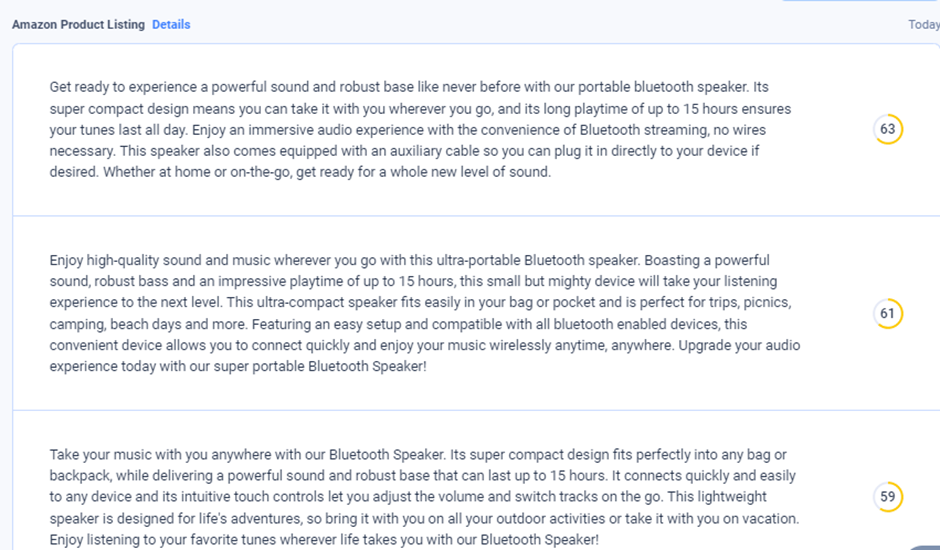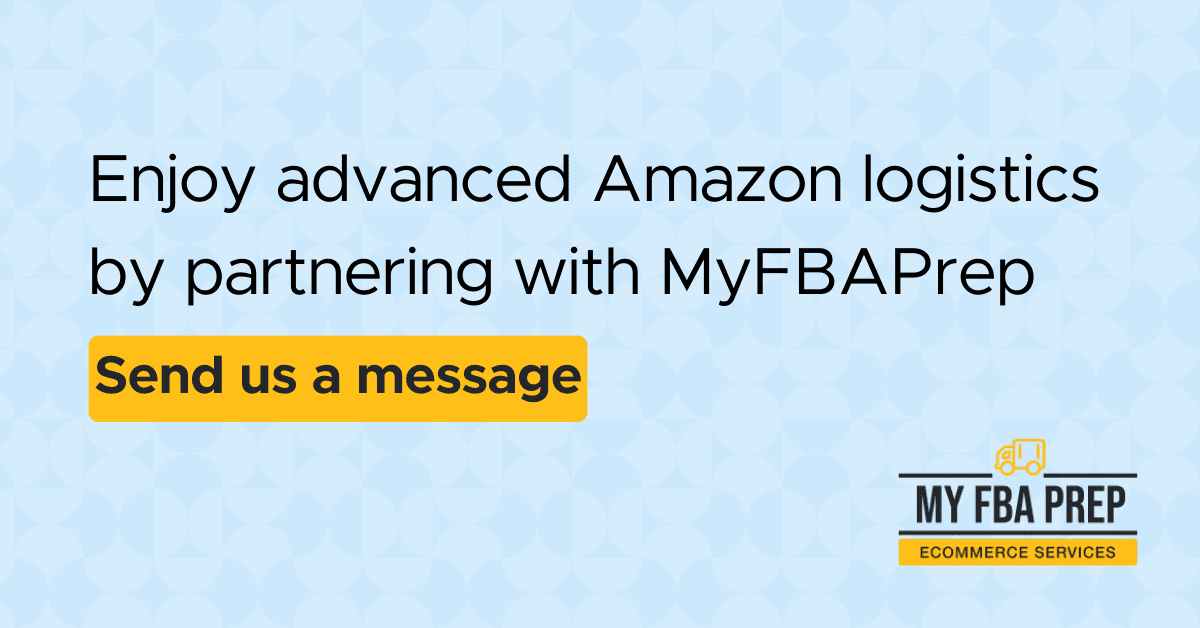
AI for Amazon Listing Optimization — Is It Worth It?

This is a guest post from Hammad Nafees of Zonguru. A marketer by trade, a writer at heart, and an Amazon evangelist around the clock, Hammad lives and breathes the world of the smiling A. You can often find him discussing the ins and outs of the eCommerce marketplace across the web. In the very rare instances when he’s not busy educating audiences, he likes to sit down and enjoy some me time watching football.
With millions of Amazon sellers competing against each other on a daily basis, optimizing Amazon listings is essential to improve your store’s visibility, attract potential customers, and increase your in-store sales on the eCommerce marketplace.
However, optimizing listings can be daunting, especially when you have dozens of ASINs to list and manage.
This is where AI assistance can be a major boon.
AI listing tools are designed to churn out well-honed listings in bulk in a matter of seconds. Some also perform keyword research, image analysis, and pricing optimization to help you create a high-quality product listing and draw more eyes to your Amazon store.

In this article, we’ll explain why AI is a powerful asset for optimizing product listings at scale. We’ll discuss the typical challenges sellers face when refining their listings, how AI in its various forms can help overcome those obstacles, and where it may fall short. We’ll also show you some examples of AI tools in action.
But first thing’s first…
Why is it important to optimize Amazon product listings?
Amazon is an eCommerce smorgasbord where customers can shop for practically anything and everything. Even within a specific niche, there are hundreds of products that compete for daily impressions and clicks. However, those ranked in the top spots in Amazon’s search results have the best chances of grabbing shoppers’ attention and generating sales.
Product listing optimization is the only surefire way (outside of paid ads) to secure that enviable top position in the search results. It’s a worthwhile investment for any Amazon seller who wants to increase product visibility and drive sales.
Here are three ways Amazon product listing optimization can pay off:
- Improve product visibility: More than 80% of clicks on Amazon go to products that rank on the first page of search results. Listing optimization increases your chances of appearing on page one, thus boosting your visibility and discoverability on the marketplace.
- Drive more sales: Optimized listings tend to have a higher conversion rate — sometimes twice as much — than non-optimized listings. Polish your Amazon product detail pages, and you’re more likely to convert potential customers into actual buyers.
- Enhance the customer experience: About 88% of Amazon shoppers say product descriptions are extremely important when deciding what to purchase on the marketplace. Ensure your listing provides an accurate and complete description of your product and resonates with the audience to build their confidence and encourage them to complete checkout.
Although there are clear benefits to listing optimization, many sellers fail to capitalize on it due to its difficult process.
What makes Amazon listing optimization so challenging?
Even when all the data and keywords required to create high-quality listings are available to sellers, optimizing listings can be an arduous task, with the most common reason being the difficulty of inserting keywords naturally into an Amazon listing.
The eCommerce giant has strict guidelines and character limits for product titles, bullet points, and descriptions. Complying with these requirements while ensuring the listing flows well and includes all critical keywords is challenging.
Moreover, not all Amazon sellers are fluent in English and struggle with the writing portion of a listing. The final copy may sound clunky as a result, which can cause potential customers to hesitate.
Lastly, listing optimization takes a lot of time for sellers with dozens of ASINs and SKUs to manage. These merchants may have to hire multiple Amazon VAs to get the job done, which means spending a significant amount of money. Even then, it can be hard to maintain listing quality across the board.
AI offers a solution to all these challenges and can save you a ton of time and effort while improving your copy and overall listing quality score.
How AI writing assistants and chatbots can help create high-quality Amazon listings
Whether you struggle to come up with a catchy title or want to create a unique description for a range of similar products, there are many AI writing assistants and chatbots available to generate quality content for your listings.
ChatGPT is usually the first one that comes to mind due to its astronomical rise in popularity over a short period. Its abilities range from answering basic and advanced questions to writing lines of code to produce Amazon listings quickly.
Other noteworthy options are Jasper, Copy.ai, WriteSonic, and AnyWord.
All these tools require prompts to craft content for an Amazon product detail page. Below are some real examples of AI writing assistants and chatbots in action:
Example 1:
This ChatGPT-enabled listing optimization used the prompt, “Create an Amazon listing for Bluetooth speakers. It should contain the keywords bluetooth speakers, portable speakers, compact speakers. Target audience is college students.”

Example 2:
This AnyWord-enabled listing optimization shows three variations of the requested prompt.

After running these simulations, we found:
- ChatGPT returned the most impressive results out of all the tested tools, displaying the title, key features, and product description in a clear format.
- The quality of listings can vary greatly according to the quality of the prompt you feed the AI writing assistant/chatbot.
- None of the above AI tools, including ChatGPT, are especially Amazon seller-friendly. For instance, they don’t offer insight into Amazon keyword research, which is integral to building optimized listings. In fact, AnyWord doesn’t even allow you to specify keywords you want to include in your copy.
Alternatively, Amazon sellers can use AI-powered Amazon seller tools to modify their listings.
Just like AI writing assistants, this category also boasts many choices. Some of the top tools in the industry are ZonGuru’s Listing Optimizer, Jungle Scout’s Listing Builder, and CopyMonkey’s Product Description Generator.
What do specialized AI-powered Amazon listing optimization tools bring to the table?
AI tools like ChatGPT essentially serve as writing assistants. They generate whatever you ask them to without contextualizing the settings in which an Amazon listing is meant to be used. For example, as pointed out earlier, none of them provide insight into the discoverability of listings or the potential search volume of the keywords to include. Instead, you have to conduct a separate keyword analysis and manually select the words to add to your prompts.
With a specialized AI listing optimization tool however, you enjoy features that help you construct robust product listings for your store. These tools combine AI and consumer data to produce listings that rank and convert well.
Below is a walkthrough of ZonGuru’s Listing Optimizer to demonstrate how this class of AI tool works and incorporates built-in keyword research and listing analysis.
Step 1: Identify keywords to add to the listing
Provide the ASINs of at least five of your competing products. The tool relies on these to generate an extensive list of keywords you can add to your listing. It also specifies their total search volume and expected sales revenue.

Step 2: Generate listing content based on keywords
Select high-performing keywords relevant to your product and import them to generate an Amazon-compliant listing title, bullet points, and product description in less than 30 seconds.

Step 3: Analyze and compare your listing
Finally, analyze your listing’s performance using metrics like optimization score, search volume, and combined revenue. You should also compare it to other listings in your niche to understand where you rank among the competition.

Here’s a quick comparison of the features you get in a general AI tool versus one specifically designed for Amazon listing optimization:
| Capability | Amazon Listing Optimization Tools | ChatGPT (and other similar tools) |
| ASIN-based keyword research | Yes | No |
| Keyword import | Yes | Not always |
| AI-driven content generation | Yes | Yes |
| Instant scoring | Yes | No |
| Search volume and revenue data | Yes | No |
| Listing analysis | Yes | Not always, and the analysis may not be relevant |
Wrapping up — Polish your Amazon listings using AI
Optimizing your Amazon product listings is crucial for increasing your visibility, improving sales, and helping you stay competitive on the Amazon marketplace. While it’s a lengthy and involved process, AI can remove the bulk of the headache for you. It creates professional listings that effectively engage shoppers and drive sales for your store, saving you time and money.
However, it’s not without its limitations: A general AI tool like ChatGPT can produce good copy, but it may not be the best solution for crafting a listing from scratch. Meanwhile, AI-powered Amazon seller tools designed explicitly for listing optimization can provide everything you need but may be pricey.
Consider the constraints of each AI tool you look at before adopting one. Although no solution is perfect, your burden will become significantly lighter. By embracing AI, you’ll receive quality Amazon listings that attract buyers — without the hassle.
About ZonGuru
ZonGuru is an all-in-one Amazon toolkit that assists private label sellers with product research, niche evaluation, competition analysis, listing optimization, inventory tracking, customer review acquisition, and running the day-to-day operations of their Amazon business. Our tools bring you the most accurate data from across 10 Amazon marketplaces in the U.S., Canada, Mexico, the UK, Italy, France, Spain, Australia, Germany, and India. We make selling on Amazon easier.

